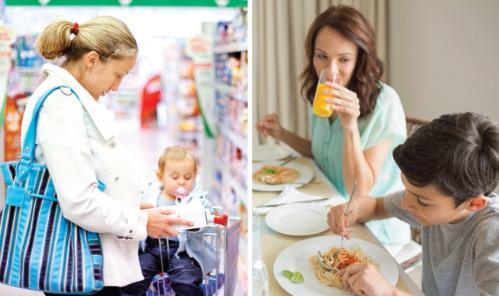By many measures, the economy has recovered from the Great Recession. The unemployment rate is lower than it’s been in decades. In July 2017 the jobs gap, the number of jobs needed to return to the national employment rate prior to the Great Recession, accounting for population growth and aging, closed. In 2016, the poverty rate fell to 12.7 percent—nearly the same as its pre-recession levels.
But, another important indicator of economic health, food insecurity, remains elevated over pre-recession rates despite the best labor market in more than a decade.
A household is food insecure if it does not have consistent access to adequate food due to a lack of money or other resources. The share of households experiencing food insecurity is continuing to recover from its recession-era peak of 14.9 percent, and in 2016 fell to 12.3 percent. That is still above its pre-recession level of 11.1 percent.
The debate about SNAP during Farm Bill reauthorization has focused on adults; but, 43 percent of SNAP beneficiaries are households with children. Children are exposed to higher rates of food insecurity than the population overall. During the summer, school-age children lose access to school-provided breakfast and lunch and SNAP benefits do not adjust to account for this.
At the national level, the share of food insecure households with children is 16.5 percent—still above the 2007 pre-recession level of 15.8 percent but well below the Great Recession peak of 21.3 in 2009. 12.9 million children lived in food insecure households in 2016.

Furthermore, 4.8 percent of households with children had very low food security in 2016, meaning that food intake was reduced and normal eating patterns were disrupted because the household lacked money and other resources for food.
National trends conceal even higher levels of food insecurity for many states. In this piece, we provide an update of rates of child exposure to food insecurity and very low food security in the states. In only two states – Colorado and South Carolina – were the share of children living in households with food insecurity and very low food security lower in 2014-16 than in 2005-07. In 23 states the share of children living in food insecure households was statistically significantly higher than just prior to the Great Recession.
The state-level picture
Every state has more than 10 percent of children living in food insecure households.[1] Nonetheless, states vary widely in the degree to which its children are exposed to food insecurity. In 16 states, more than one-in-five children live in food insecure households. In four states – Arkansas, Alabama, Louisiana, and New Mexico – more than one-in-four children live in food insecure households.

While the share of children living in households with food insecurity has continued to fall in the national numbers, only four states are doing statistically significantly better than pre-recession levels (2005-07 to 2014-16). Far out in front is Iowa, which has seen a more than 25 percent reduction in the share of children living in food-insecure households from 2005-07 to 2014-16. In 23 states, the shares of children living in food-insecure households is statistically indistinguishable, suggesting that these states are back to pre-recession levels.
Almost half of states had a rate of children living in food-insecure households in 2014-16 that was statistically significantly higher than in 2005-07. Connecticut, Delaware, and New Mexico’s share of children living in food-insecure households increased by almost 50 percent; in Alabama the rate almost doubled.

In almost half of states more than 6 percent of children lived in households with very low food security. Arkansas, Alabama, Louisiana, and New Mexico had the highest rates of food insecurity and were also at or near the top of the distribution of the share of children living in households with very low food security. In addition, in Rhode Island, Maine, Nebraska, Connecticut, Missouri, Kentucky, Tennessee, and Nevada more than 7 percent of children lived in households with very low food security.

Child exposure to very low food security was statistically significantly higher in 21 states in 2014-16 compared with 2005-07. In 2014-16, the share of children living in households with very low food security remained double (Rhode Island, North Dakota), triple (Nebraska, New Mexico), and quadruple (Alabama, New Hampshire) pre-recession levels. Only four states had a statistically significant reductions in the share of children living in households with very low food security in 2014-16 compared with 2005-07: South Carolina, Colorado, Pennsylvania, and Mississippi. For the remaining 25 states and the District of Columbia, the percent of children living in households with very low food security in 2014-16 are indistinguishable from 2005-07.

These rates of food insecurity and very low food security are snapshots taken during the school year. As we have written, during the summer, children from food insecure households have less consistent access to food. A recent US Department of Agriculture demonstration project found that providing families with an extra $60 per month during the summer reduced household rates of food insecurity by 15 percent and very low food security by one-third. To reduce exposure to food insecurity and very low food security among children, Congress should consider increasing SNAP benefit levels, especially to households with children.
- Note that due to small sample sizes at the state level, we present the rate of children’s food insecurity averaged across a 3-year period. Because rates of food insecurity at the national level have continued to reduce annually, averaging across three years may overstate the extent of food insecurity in states with more recent improvements.
The Brookings Institution is committed to quality, independence, and impact.
We are supported by a diverse array of funders. In line with our values and policies, each Brookings publication represents the sole views of its author(s).







Commentary
Children’s exposure to food insecurity is still worse than it was before the Great Recession
June 29, 2018